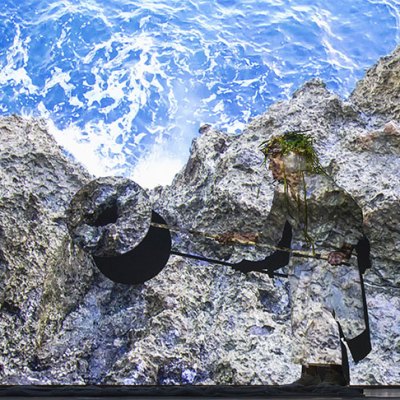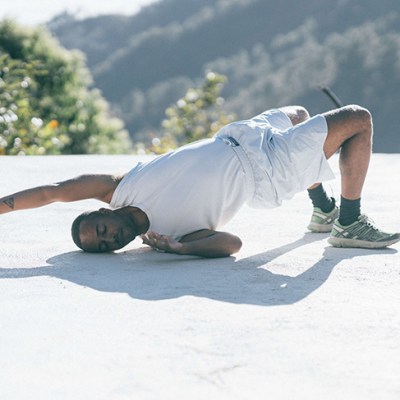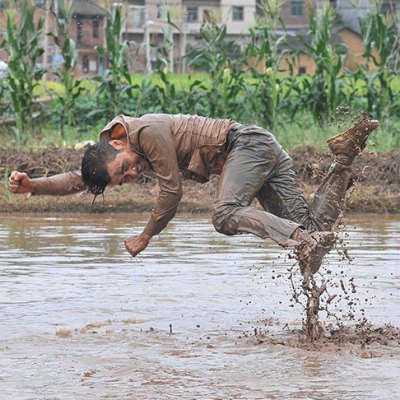It is 41 degrees celsius in the loggia at the top of the Palazzo Strozzi in Florence as Taiwanese artist Yahon Chang (b. 1948) prepares for his performance. The late June heat is stultifying. While members of the audience fan themselves, relinquishing seats to escape the glare of the evening sun, the artist sits quietly in the corner, towel around his neck, deep in prayer. When he begins to paint, first on rectangular sheets of rice paper laid out on the floor and then on a 24 metre-long length of linen canvas, you can see steam rise from the black ink as it is manipulated across each surface.
The artist works his way down these grounds in his stockinged feet, wielding various long, custom-made brushes which he frequently dips into deep pails. As he splashes the ink, pressing, sweeping or dragging his laden brush, a loose cursive script emerges out of movements and gestures derived from the martial art of t’ai-chi. There may be a superficial resemblance to the action painting of Abstract Expressionism, but Chang’s performative pieces are in fact deeply rooted in the traditions of the classical Song dynasty ‘literati’ scholars, who combined poetry with calligraphy and painting to express inner sentiment rather than mimic the outward appearance of the world. This is Chinese ink painting – although not as we know it.
Yahon Chang’s performance at the Palazzo Strozzi, Florence, 2019
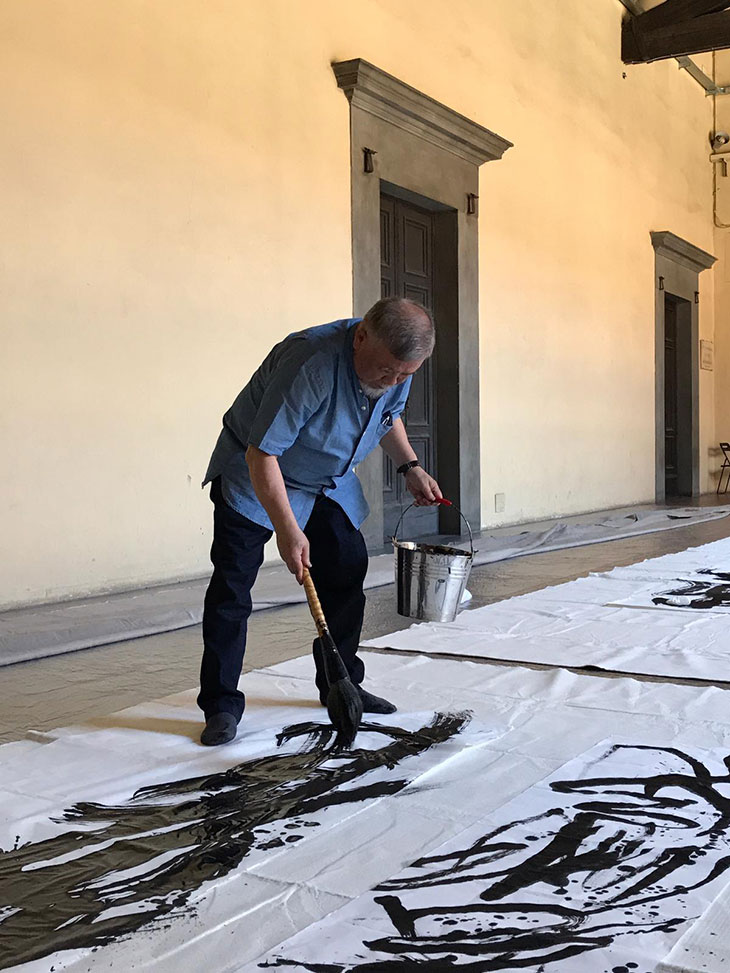
For the largely self-taught artist, his lack of formal training has given him the freedom to find an original voice as a contemporary ink painter. He draws on a range of influences including the xieyi or ‘sketch style’ made famous by the Zen painter Liang Kai (c. 1140–c. 1210), which evokes a subject or atmosphere with minimal use of detail, achieving a simplicity and spontaneity that also allowed for the beauty of accidental effects. He also always travels with a reproduction of a well-known work by Wang Xianzhi (344–86), a calligrapher who developed the one-stroke cursive script, in which all the characters in a text are formed from a single stroke. In his own calligraphy, Chang is not writing a word but using brushwork to express the meaning of a word – which will come to the artist in the moment of lucidity and heightened consciousness after meditation or prayer – to him.
When we meet after the performance, Chang explains how the ancient structure of the Palazzo Strozzi and the exhibition ‘Verocchio: Master of Leonardo’ (closed July 14) both evoked the memories and feelings of his childhood, and prompted him to think of the words of the Old Testament prayer of Jabez (Chang converted from Buddhism to Christianity after the death of his wife in 2000). While performing he had intended to play popular Taiwanese music from his childhood in the 1950s, and from the period in the ’70s when he met his wife, but was prevented by copyright restrictions. Now we listen to a few bars of the nostalgic, Japanese-inspired melody of the famous ‘Green Island Serenade’ of 1954, called up on Chang’s daughter’s smartphone, in which the balladeer yearns for their lover incarcerated as a political prisoner by the Kuomintang on this small island off Taiwan. The themes of love, loss and memory are woven into Chang’s vast painting, which he is planning (as he has done in the past) to remake as sculpture – effectively line forged in iron.
Richard Long’s work installed at Castello di Brolio. Photo: Massimo Listri
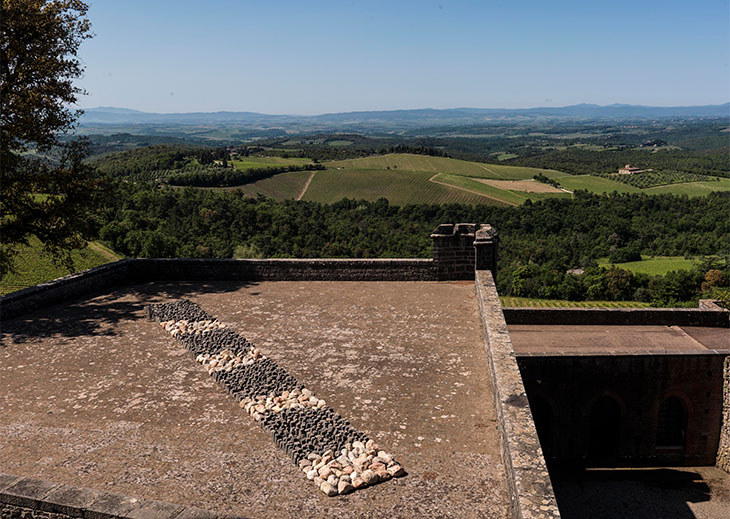
The performance marked the launch of the fourth edition of Art of the Treasure Hunt (until October 15), an initiative produced by Luziah Hennessy bringing together the work of 17 artists from around the world – the celebrated and the little-known – for display in the buildings of six of the top Chianti wineries. This year’s iteration, curated by Maria Rus Bojan, asks a question: ‘From Where Comes Your Voice?’ Works by Chang include a 20 metre-long ‘scroll’ painted in Beijing and now cascading from a vaulted brick ceiling at the Castello di Brolio, and an installation of smaller ink paintings on paper. Inside the castle’s great Gothic Revival hall, the Shanghai-born, Dijon-based Yan Pei-Ming contributes an expressive reworking of Titian’s portrait of Cardinal Alessandro Farnese. Outside on the terrace is a horseshoe piece by Mark Handforth, an artist born in Hong Kong, educated in London and Frankfurt, and now working in Miami. Nearby, Richard Long has used local stones for his homage to the alternating black and white bands of Sienese church architecture, one of the most resonant installations of this glorious Tuscan art trail.
Art, award-winning wine and the unspoilt Tuscan landscape certainly make for an irresistible combination – not least when the historic buildings of these often ancient vineyards boast such dramatic interiors as the cantinas of Fèlsina (Chang, Osvaldo González, Nathalie du Pasquier, Augustas Serapinas, Raqib Shaw) or offer the untouched 18th-century bucolic decoration of the Villa di Geggiano (Liz Deschenes, Sara VanDerBeek). As for the other venues and artists, it will be a pleasure to hunt them out and discover them for yourself.
